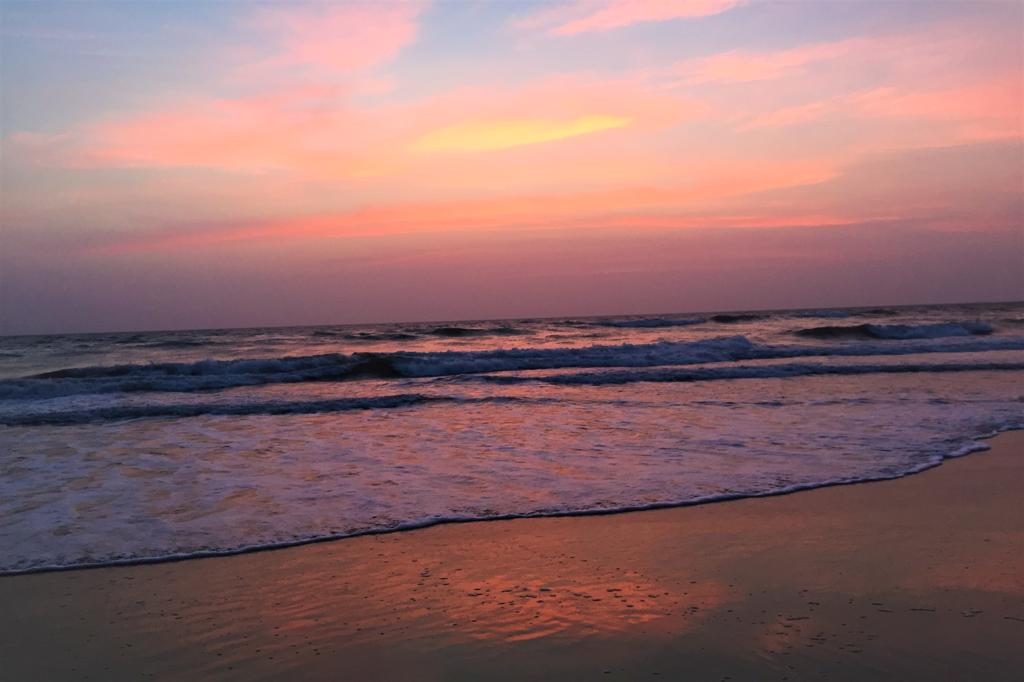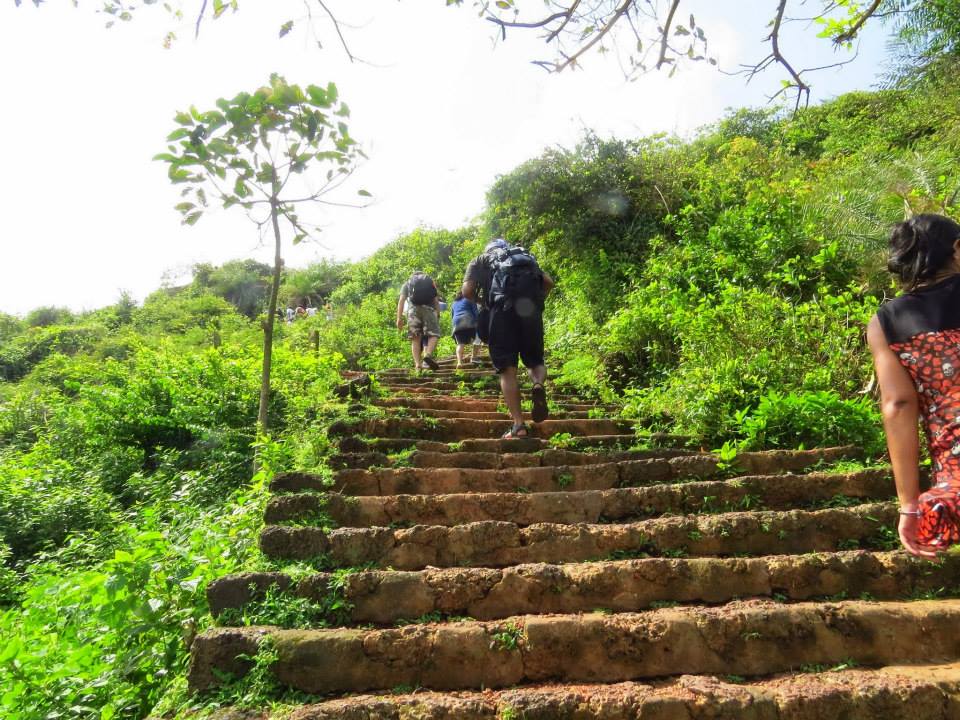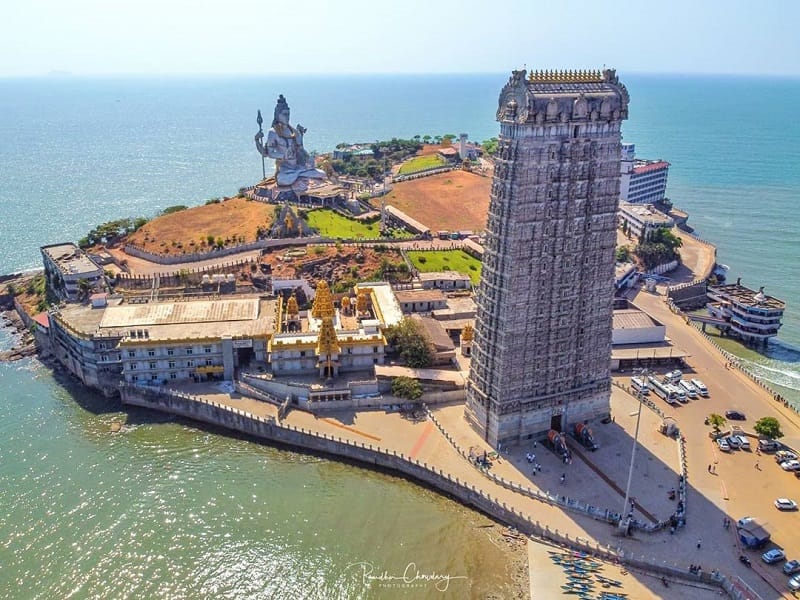Wavacious Gokarna
“Sand below, sky above, happiness around and peace within.”
This was Gokarna, in a nutshell!!
Gokarna, a small town on the sea front in the western Karnataka, offers a complete package of contrasting beauty while being a pilgrimage site, a popular hippie
destination and a getaway for those seeking solitude- all at the same
time.
It houses golden beaches named after the way they are shaped
like Om Beach and Half Moon Beach. It serve sites for trekking, mountaineering,
camping and water sport activities like surfing, scuba diving, snorkeling,
parasailing, and jet skiing. It is also well- known for sacred pilgrimage
sites like Mahabaleshwar Temple, which has a shrine dedicated to the Lord
Shiva. Therefore, it’s a natural delight with rocky mountains and the
Western Ghats on one side, and the Arabian Sea on the other.
Mystery Behind its Name: Gokarna (Cow’s Ear)
- Geographically, it is formed by an
ear-shaped confluence of two rivers, Gangavali and Agnashini
- According to popular mythological belief, it is the place where Lord Shiva emerged from the incarnation of Mother Earth in the form of a cow.

So, it was in August'21 when I journeyed my way to Bangalore followed by an awaited overnight train ride to Gokarna (483 km from Bangalore) along with my family staying there. It was such an energizing experience to meet them after a long time and travel to the calm and isolated beach town perfect for seeking adrenaline rush, scenic natural beauty and spiritual solace.
Day 1
We reached the Gokarna station- small, green and peaceful and after proper registration in view of COVID-19 protocol, it led our way to our stay located in the heart of the city. We crossed the roads sided with lush green fields and cattle herds, coming across a blend of rural culture and an urban outlook going hand in hand. Thereafter, we checked in and began with the sightseeing…
Gokarna Beach
We started off
with the Gokarna beach, the longest beach among the Beaches of Gokarna and its entry point is
right near the Mahabaleshwara Swamy Temple.
It is located along an isolated stretch and is a blessing for the nature
lovers.
Mahaganpati Temple
This temple is well known for its 1.3 m tall black stone idol of Lord Ganesha who is fondly worshipped for the feat of securing the Atmalinga in Gokarna. As per local belief, devotees should visit Maha Ganapati Temple before going to Mahabaleshwar Temple because Lord Shiva blessed him with the honour of first worship.
Please note: The visitors are required to adhere to the prescribed dress codes i.e. dhoti with/ without shirt for males and traditional dresses like suit/ saree/ fully covered dress for females.
While we went ahead and crossed through the local market, the streets were found loaded with colourful shops selling souvenirs like Kallu sakkare (a unique kind of sugar candy), brass lamps, trishuls, decorative items made out of sea shells.
Then, we had South Indian lunch in a nearby local restaurant.
(Note: The local delicacies of Gokarna include traditional south-Indian flavored Sea food which is generally relished by tourists.)
Post lunch, we went to another famous temple on foot which came out to be one of the most scenic and soul stirring viewpoints of the town.
Mahabaleshwara Temple
Gokarna
Mahabaleshwar Temple, also
famously known as Dakshina Kasi (Southern Kashi) or Bhookailasa, is one of the most revered temples of the town.
Mythological background
According to Indian mythology, when
Ravana was returning from Mount Kailasa to Lanka carrying the prized possession
of an Atmalinga (power granted by lord shiva), his route crossed Gokarna. The
gods did not want him to finish the journey with the linga and sent Lord
Ganesha who appeared as a young monk to deceive Ravana and keep Atmalinga on
the ground as the condition was that wherever Atmalinga is lowered and kept on
the ground first, that place shall become its final place of worship.
Architectural style
- Gokarna Mahabaleshwar Temple architecture features resemble the Dravidian style of construction using white granite.
- The
Sanctum has the main Atmalinga of Lord
Shiva that is about 6 foot under the ground, exactly matching the sea level.
- Atmalinga is placed in a square Saligrama Peetha with a small hole on the top.
- There is also a 1500- year old stone carved Lord Shiva idol in the standing position represents the main deity.
Interest fact
The top of the Linga is like a shape of a cow’s ear and could be seen from the hole. The actual Atmalinga is visible in whole only once in 40 years during the Ashtabandana Kumbhabhishekam.
Religious Significance
Gokarna and its religious
importance finds mention in several Puranas like the Bhagavata Purana, Sthala
Purana, Guru Charitra, and the Skanda Purana. Let’s have a look at some of the
important facts:
- The Atmalinga of Lord Shiva at Gokarna Temple is considered as sacred as the Jyotirlinga of Lord Shiva in the Kashi Vishwanath Temple.
- It is one of the seven Mukti Sthalas of Karnataka.
- It is also one of the 276 Paadal Petra Sthalams in India. Shaiva Nayanars believed these temples to be the greatest Shiva Temples in the 6th to 9th century CE.
Later, on the way back, I
got the beautiful opportunity to get back and enjoy solitude on the the Gokarna
beach- a shore with golden sand, tall palm trees, soulful music and
serene waves of the ocean gushing towards the rocks while going to and fro the
feet dipped in the water. Then, it was time to get back to our stay via a local
auto and soon, we all got ready to go to the Om beach and Kudle beach for further
enjoying beachhoping in the town.
However, please note: Catamaran
ride, beach bathing and the water sports were restricted as a part of
COVID protocol and safety. Also, we were not allowed to go farther and deeper
into the sea considering the possibility of high tides due to full moon day.
Om Beach
Om Beach takes the shape of an ‘Om’, a Hindu spiritual symbol. It was one of the most silent and cleanest beaches and became a spot for soothing relaxation and enjoyment for us.
Kudle Beach
This beach was one of the liveliest beaches in Gokarna having popular cafes around along with many shacks and local artists for beach style hair braiding and selling souvenirs like indigenous bead bracelets and shell anklets.
The visit to this beach involved trekking, photography,
spending quality time with self (while dancing and meditating amidst the sea
waves) and the family as we ate, played, laughed a little harder and watched
the different shades of sun as it completely soaked under water.
As it got darker, we trekked our way up and had dinner in the famously known, Mantra Café of Gokarna.
Finally, we called it a day and relaxed in the hotel.
Day 2
The happy
morning brought us a hamper of joy, energy and all the crazy fun while we
jogged, did yoga/ meditation, soaked completely in water and enjoyed the hard hitting waves at the
Gokarna beach.
However, soon we went to the hotel and got ready for the breakfast followed by a drive to the Jog falls (102 km from Gokarna).
Jog Falls
Jog Falls is created by the Sharavati dropping
253 m, making it the second highest plunge waterfall (waterfalls that drop vertically without
touching the underlying cliff face) and the third-highest waterfall in
India after the Nohkalikai Falls with a
drop of 335 m in Meghalaya and Dudhsagar Waterfalls with a drop of 310 m in
Goa.
Note: There were strict COVID-19 safety protocols and no one (under 18) was allowed to enter without being fully vaccinated.
We got to experience a distanced
sight of falls at the site. However, the falls were truly serene, looked
absolutely pure, milky and divine and offered us a journey which heightened the
effect by the wild region covered with a wealth of luxuriant vegetation.
The next destination was Murudeshwar in the day's list. Murudeshwara is another name for Lord Shiva and it nestles the magnanimous statue of Lord Shiva together with the highest Gopura (temple’s entrance gate) in the world. The town also proffers beach- side cafes and a bustling local market.
Murudeshwara Temple
This temple is built on the Kanduka Hill with the second highest statue of Lord
Shiva in the world along with the 20-story elevated Gopura that stands at 123 feet and is guarded by
two concrete elephants in the steps leading inside the temple.
The
temple has been modernized except the sanctum sanctorum, which retains its
original form and has intricate carvings. We got a chance to go to the highest
point of the gopura and witness the breath- taking views from all the four
sides. They included the entire city view, glimpse of the magnificent shiva
statue as well as that of the sea having cliffs and a deep world of rich
aquatic life.
The completion of this amazing temple tour led us to the nearby beach café for supper. Soon after, we boarded our train and left for Bangalore with all the fond memories of this vivacious place!















Comments
Post a Comment